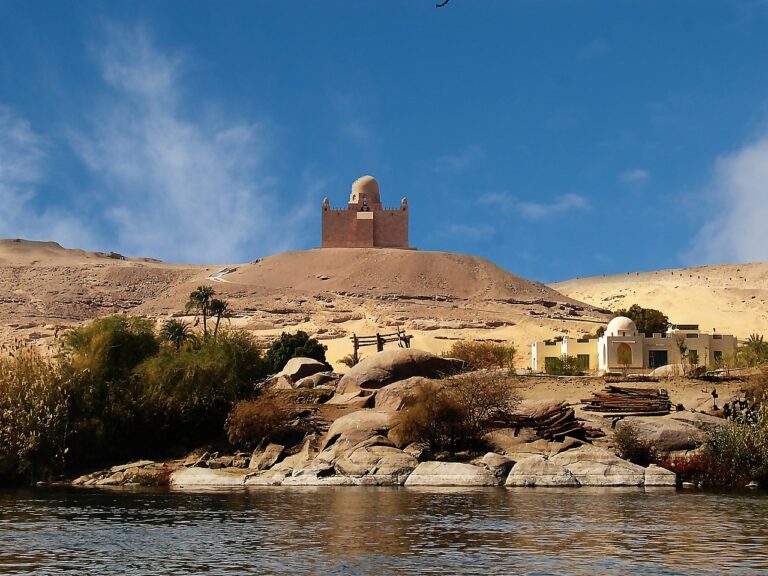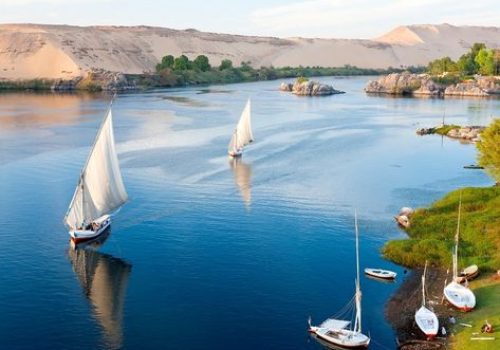- Egypt Tour Magic
- Excursions in Egypt
- Egypt Tour Packages
- Day Tours
- Top Destinations
- Shore Excursions
- Cruises in Egypt
- Blogs
- Tips before you come to Egypt
- UNESCO World Heritage sites
- Historical Sites in Egypt
- Optional Excursions in Egypt
- Cultural and historical heritage of Egypt
- Ancient Egypt’s Kings
- famous Egyptian dishes
- About Us
- TF Search
- Egypt Tour Magic
- Excursions in Egypt
- Egypt Tour Packages
- Day Tours
- Top Destinations
- Shore Excursions
- Cruises in Egypt
- Blogs
- Tips before you come to Egypt
- UNESCO World Heritage sites
- Historical Sites in Egypt
- Optional Excursions in Egypt
- Cultural and historical heritage of Egypt
- Ancient Egypt’s Kings
- famous Egyptian dishes
- About Us
- TF Search
Aswan High Dam
Aswan High Dam
The Aswan High Dam, completed in 1970, is a monumental engineering project located on the Nile River in southern Egypt. Its construction marked a pivotal moment in modern history, representing both the immense capabilities of contemporary engineering and the complex interplay between technological advancement and environmental management.
The dam’s primary objectives were to control the annual flooding of the Nile, generate hydroelectric power, and provide a reliable water source for irrigation. These goals were driven by Egypt’s need for economic development and modernization, spearheaded under President Gamal Abdel Nasser. The project transformed Egypt’s landscape, creating Lake Nasser, one of the world’s largest artificial lakes, and significantly impacting the nation’s agricultural and industrial capacities.
While the Aswan High Dam has played a crucial role in Egypt’s development, it has also had profound environmental and social implications. The creation of Lake Nasser led to the displacement of over 100,000 people and altered the natural ecosystem of the Nile. Additionally, the dam has been a focal point in regional geopolitics, with its effects extending beyond Egypt’s borders to influence neighboring countries that share the Nile’s waters.
The dam stands as a symbol of human ambition and the challenges of balancing progress with the preservation of cultural and environmental heritage. Its legacy continues to shape discussions on large-scale infrastructure projects and their broader impacts on society and the environment





Historical Context
Predecessor – The Aswan Low Dam: Before the Aswan High Dam, the Aswan Low Dam was constructed by the British between 1898 and 1902. Though it provided some control over the Nile’s flow and aided in irrigation, it was insufficient for full flood control or reliable year-round water supply. The High Dam was conceived to address these limitations.
National Symbolism: The construction of the Aswan High Dam was closely tied to Egypt’s national identity and independence. Under President Gamal Abdel Nasser, the dam became a symbol of Egypt’s modernization and post-colonial development. Nasser sought to industrialize Egypt and improve its agricultural output, and the dam was central to this vision.
Suez Crisis: The financing of the Aswan High Dam became a point of international tension. Initially, the U.S. and Britain had promised financial support, but they withdrew their offer in 1956, largely due to political differences with Nasser’s government. This led Nasser to nationalize the Suez Canal to fund the dam, an action that precipitated the Suez Crisis, where Egypt was invaded by Israel, the UK, and France.
Soviet Involvement: Following the withdrawal of Western funding, the Soviet Union stepped in, providing technical expertise and financial support. This marked a significant moment in Cold War geopolitics, with Egypt aligning more closely with the Soviet bloc.

Technical Aspects
Design and Construction: The Aswan High Dam is a rock-fill dam, meaning it is constructed primarily from earth materials such as rocks and soil. The core of the dam is impermeable, preventing water from seeping through, while the surrounding layers are more porous to support the structure.
Water Storage and Management: The dam’s reservoir, Lake Nasser, holds a vast quantity of water, which can be released as needed to maintain a consistent flow of the Nile, supporting agriculture and maintaining river levels during dry periods.
Sediment Management: One of the technical challenges associated with the dam is managing the sediment that used to flow downstream with the Nile’s floods. This sediment now accumulates in Lake Nasser, reducing the reservoir’s capacity over time and requiring careful management to prevent long-term issues.

Environmental Impacts
Disruption of Natural Silt Deposition: Before the dam’s construction, the Nile’s annual floods deposited nutrient-rich silt across the floodplain, naturally fertilizing the land. With the dam in place, this silt is trapped in Lake Nasser, leading to reduced soil fertility downstream. Farmers now rely more on chemical fertilizers, which has environmental and economic implications.
Impact on Biodiversity: The dam has significantly altered the Nile’s ecosystem. The reduction in the river’s flow and the prevention of annual floods have affected fish populations and other wildlife dependent on the river’s natural cycles. Lake Nasser has created a new aquatic environment, but it is different from the original Nile ecosystem.
Salinization: In some areas, reduced water flow and lack of silt have led to soil salinization, where salt builds up in the soil, making it less productive for agriculture.
Evaporation Losses: Lake Nasser, being a vast surface area in a hot desert climate, loses a significant amount of water to evaporation. This is a concern, as it reduces the overall water availability for downstream use.

Cultural and Social Impact
Relocation of Communities: The creation of Lake Nasser required the relocation of over 100,000 people, primarily Nubians who had lived in the area for generations. This displacement has had lasting social and cultural consequences, as communities were resettled far from their ancestral lands.
Archaeological Rescues: The rising waters of Lake Nasser threatened many ancient monuments and archaeological sites, most notably the temples at Abu Simbel. An international campaign, coordinated by UNESCO, successfully relocated these temples to higher ground. This operation, which involved cutting the temples into large blocks and reassembling them, is considered one of the greatest archaeological rescue efforts in history.
Tourism and Economy: The dam and Lake Nasser have also contributed to Egypt’s economy through increased tourism, with the relocated temples and the dam itself being major attractions. The dam has also played a crucial role in Egypt’s agricultural and industrial development by providing a reliable water supply and energy source.
Role in Egypt’s Development
Economic Impact: The dam has had a profound impact on Egypt’s economy. By providing a stable and reliable water source, it has supported the expansion of agriculture, particularly in arid regions. This has contributed to food security and economic stability.
Urbanization and Industrialization: The reliable electricity supply from the dam has been a key factor in Egypt’s industrialization. It has supported the growth of industries such as textiles, steel, and chemicals. Additionally, urban centers have expanded, driven by both population growth and industrial development.
Agricultural Revolution: The ability to control flooding and ensure year-round irrigation has transformed agriculture in Egypt. Large areas of previously unproductive land have been brought under cultivation, leading to increased crop yields and the development of new agricultural practices.

Engineering Specifics
Construction Techniques: The construction of the Aswan High Dam involved innovative engineering techniques for its time. To ensure stability and durability, the dam was built with a core of impervious clay and surrounded by layers of rock and soil. The foundation was reinforced with a complex system of drains to manage seepage.
Hydroelectric Power Generation: The dam’s power plant includes a series of turbines that convert the kinetic energy of flowing water into electricity. The power generated is crucial for Egypt’s industrial sector and urban centers. Each turbine can produce about 175 megawatts, and the total output of the plant is a significant portion of Egypt’s energy needs.
Control Systems: The dam employs sophisticated control systems for managing water flow and regulating the reservoir levels. This includes monitoring equipment to track water levels, sediment accumulation, and structural integrity.

Ongoing Challenges
Water Disputes: The dam has been a point of contention among the Nile basin countries. Downstream countries like Sudan and Ethiopia have expressed concerns over water rights and the impact of the dam on their own water needs. These issues are part of broader regional discussions on how to share the Nile’s waters equitably.
Maintenance and Upgrades: As with any large infrastructure project, the dam requires ongoing maintenance and upgrades to ensure its continued operation. This includes addressing issues like sediment build-up in Lake Nasser and ensuring the dam’s structural integrity over time.
The Aswan High Dam is a landmark achievement in engineering and a crucial element in Egypt’s development. It has provided significant benefits, such as flood control, hydroelectric power, and enhanced irrigation. However, its construction also brought about environmental and social challenges. Overall, the dam represents a blend of technological progress and the complexities of managing large-scale infrastructure projects.


